Like a mother content to be on the sidelines at her son’s joyous event, the Sancta Maria Stella Orientis Oratory deemed the celebration of its own 25th anniversary as simply an added fragrance to the trimmings of UA&P’s Golden Jubilee. Though this dearly loved chapel has become part of the lives of many, its little details are unknown to most. Here we present some information that will serve to deepen one’s appreciation of this part of the campus widely considered as the heart of the University.
- The chapel, dedicated to Holy Mary, Star of the Orient, was blessed on August 15, 1992, feast of the Assumption of the Blessed Virgin.
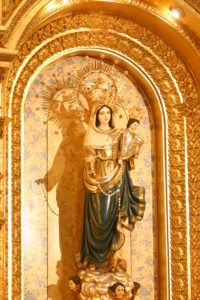
2. Before entering the chapel, you see a painting that depicts the Body of Christ on our Lady’s lap, with Mary Magdalene, St. John, and the angels grieving over the lifeless body of Christ. This is a copy of the “Lamentation Over the Dead Christ” by Caspar de Crayer, which hangs in the Diocesan Museum of Sacred Art of Álava (Spain). The original was finished around 1640.
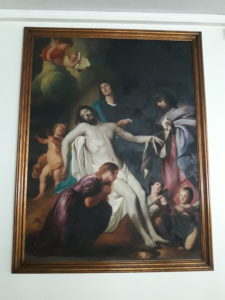
3. The relic ex ossibus (part of the bones) of Saint Josemaría Escrivá rests in the silver reliquary under the main altar of the chapel.
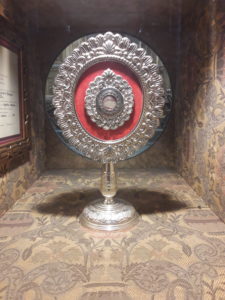
4. The metallic seal of Opus Dei and golden rose on the main altarpiece, just above the image of Holy Mary, Star of the Orient, were from Saint Josemaría Escrivá.
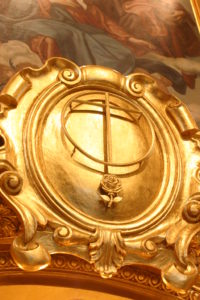
5. The reredos—the central piece—are Philippine Baroque-inspired. Carvers from Pampanga made use of Batikuling wood for the reredos.
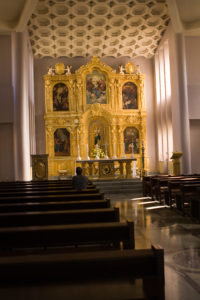
6. The five paintings on the life of Our Lady were gifts from Blessed Alvaro del Portillo, first successor of St. Josemaría Escrivá as head of Opus Dei.
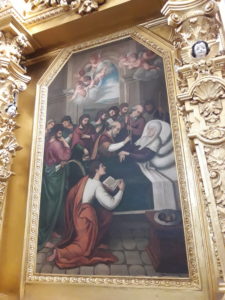
7. On the chapel walls are reproductions from the scenes of the Passion by Giotto done by Gary Chiu, an artist from Hong Kong. The paintings provide a continuing witness of Christ’s love for mankind.
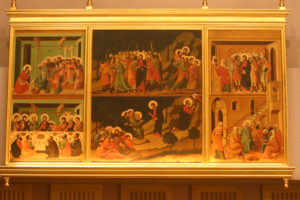
8. A dove representing the Holy Spirit hovers over the faithful, symbolizing the hidden effect of grace in the hearts of the visitor.
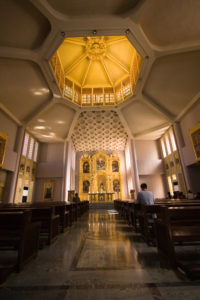
9. The reredos of the Blessed Sacrament Chapel is a reproduction of the Blessed Trinity altarpiece by Luis Antonio Planes (18th century) found in the Cathedral of Valencia (Spain) before which Saint Josemaría Escrivá celebrated Mass several times at the start of Opus Dei in that Spanish province.
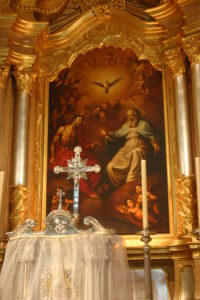
10. The oratory was designed by the Asian Architects. The design considerations of Stella Orientis are one of focus and devotion to Christ as exemplified by Mary. Every detail performs a catechetical function for the faithful.
The chapel is open for the following activities:
Mass: 7:45 am and 12:05 pm
Confession: 8:45 am to 7:00 pm
Easter Triduum
Eucharistic Procession
Penitential Rites (for Advent and for Lent)
- With inputs from Fr. Emmanuel Garrido.
Leave a Reply